ベンチトップ型SLD光源
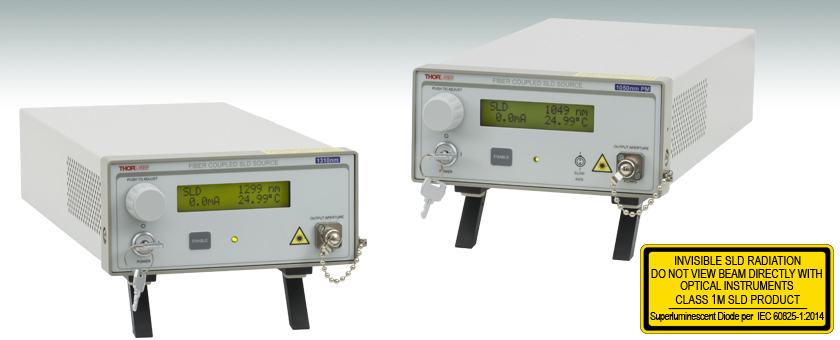
- Superluminescent Diodes (SLDs) with Broadband
Emission Centered at 1050, 1310, or 1550 nm - Temperature Stabilized Using a TEC
- FC/APC Bulkhead Connector
S5FC1018S
SM Fiber Coupled,
1310 nm
S5FC1050P
PM Fiber Coupled,
1050 nm

Please Wait
| Item #a | Wavelength | Output Power | Bandwidth @ -3 dB | Internal Pigtailed Diode |
|---|---|---|---|---|
| SM Fiber-Coupled Benchtop SLDs | ||||
| S5FC1021S | 1310 nm | 12.5 mW | 85 nm | SLD1021S |
| S5FC1018S | 1310 nm | 30 mW | 45 nm | SLD1018S |
| S5FC1550S-A2 | 1550 nm | 2.5 mW | 90 nm | SLD1550P-A2 |
| S5FC1005S | 1550 nm | 22 mW | 50 nm | SLD1005S |
| PM Fiber-Coupled Benchtop SLDs | ||||
| S5FC1050P | 1050 nm | 8 mW | 50 nm | SLD1050P |
| S5FC1021P | 1310 nm | 12.5 mW | 85 nm | N/A |
| S5FC1018P | 1310 nm | 30 mW | 45 nm | SLD1018P |
| S5FC1550P-A2 | 1550 nm | 2.5 mW | 90 nm | SLD1550P-A2 |
| S5FC1005P | 1550 nm | 22 mW | 50 nm | N/A |
特長
- 中心波長が1050 nm、1310 nm、1550 nmの広帯域光源
- 2.0 mmナローキーのFC/APCコネクタが付いたシングルモードファイバまたは偏波保持ファイバによる出力
- TECによる温度安定化
- 低雑音出力:< 0.1%
- リモート操作用USB 2.0インターフェイス付き
- 各ユニットを検査結果一式とともに発送
当社のベンチトップ型SLD光源は、ファイバ出力のスーパールミネッセントダイオード(SLD)、コントローラ、ならびにTECを内蔵しています。光源は1050 nm、1310 nm、1550 nmを中心波長とする広帯域な光を生成します。出力部にはFC/APCコネクタが付いています。すべての広帯域光源と同じようにデバイスの中心波長は相対振幅の加重平均によって定義しています。スペクトルの形状にばらつきがあることから、この値はピークパワーまたはFWHMの中心波長には相当しません。
1050 nm SLD光源は、偏波保持ファイバ出力でご用意しておりますが、ほかの波長についてはシングルモードファイバ、偏波保持ファイバのどちらでもご購入いただけます。ご提供可能な光源の概要については右の表をご覧ください。なお、戻り光により出力パワーの減少やSLD光源の損傷が引き起こされることがあります。 これらのSLD光源にFC/PCコネクタなど後方反射する部品の使用はお勧めしておりません。標準品とは異なるコネクタ、ファイバ、光アイソレータ等を組み込んだカスタムユニットもご提供可能です。詳細は当社までお問い合わせください。
SLDのパラメータは、ユニット前面に付いているLCDインターフェイスでご覧いただけます。詳細については「動作 」のタブをご覧ください。SLDを使用可能にしたり、温度や出力の調整は、USB 2.0コネクタによりリモート操作で行うことが可能です。背面パネルからは、0~5 Vの外部信号でSLDを変調するアナログ入力が可能です。この外部信号は内部の設定ポイントに加算されます。損傷を防ぐため、アナログ入力と内部設定ポイントの加算値がSLDのリミットを超えた場合、内蔵のマイクロコントローラが出力を無効にします。
このベンチトップ型SLD光源は、独立した高精密、低雑音の定電流電源と温度制御ユニットで動作します。内蔵のマイクロコントローラがSLDの光出力ならびに温度を完全制御し、システムに故障がないかモニタします。
スーパールミネッセントダイオード(SLD)は、優れた高出力広帯域光源で光コヒーレンストモグラフィ(OCT)や光ファイバージャイロスコープ(FOG)の用途に適しています。このページでご紹介しているSLDはインジウムリン(InP)デバイスとなります。安全のため、当社のSLDの多くはクラス3Bのレーザ基準を満たす筐体で設計されています(キースイッチ、3B準拠のインターロック機能、取り付け済みのダストキャップ、そして5秒点滅する警告灯)。また、LEDの色はレーザガラスで干渉しません。3B準拠の筐体付きのSLDについては下記をご覧ください。3B準拠について詳細は「レーザの安全性」タブをご覧ください。
S5FCシリーズには100~240 VACに対応したユニバーサル電源が付いているので、電圧の選択は不要です。ヒューズは使いやすいように背面に配置されています。
標準品以外にもお客様の用途に合ったカスタム仕様(設定波長やアイソレータの有無など)のベンチトップ型SLD光源もご提供可能です。詳細は、当社までお問い合わせください。
ディスプレイ表示について
当社のSLDは、右写真の通り、1つの液晶ディスプレイに4つの情報が表示されます(バックライト付きデジタルディスプレイ)。
- 上段左: デバイスタイプが表示されます。
- 上段右: SLDの波長が表示されます。
- 下段左: SLDパッケージにモニターダイオードが含まれる場合、出力値(単位mW)が表示されます。本表示がenableの場合、モニタ用フォトダイオードにより測定された出力レベルであり、出力の目安程度の精度となります。disableの場合、出力レベルは「0.00 mW」と表示されます。モニターダイオードがSLDに含まれていない場合、電流値(単位mA)が代わりに表示されます。
- 下段右: SLDの実際の温度(単位°C)が表示されます。 初期設定は25°Cになっていますが、調節可能です。
SLDの光出力パワーおよび温度の調節
調整用ノブ/スイッチは自動速度制御が可能です。微調整はノブをゆっくりと回し、粗調整はノブを素早く回します。SLD電流閾値は、ユーザがSLDの光出力曲線の非線形項を除去設定できるコマンドパラメータです。閾値電流は1 mAに初期設定されています。
電源が入るとまず始めに、出力測定値、温度、波長などの変数が示される表示モードになっています。 調整用ノブ/スイッチを一度押すと、電流調整モードになります。 ノブを回すだけで電流を調整することができます。 もう一度調整用ノブを押すと、温度調整モードになります。 温度はこのモードで調整が可能です。 分解能は電流調整が0.1 mAで、温度調整は0.01°Cです。
SLD出力変調
アナログ入力をSLD出力の変調に使用するか、外部の5 V電源を使用したSLD出力の遠隔設定が可能です。最大の5 V入力時には、定電流駆動方式を用いて最大値に調整された出力が対応します。実際の出力は、電流の設定と動作温度に依存します。
さらに出力調整ノブの不感帯をなくすには、ユニットの出力はSLDダイオード結合の閾値電流までオフセットします。ノブを閾値以下に調整するとすぐに電流が0.0 mAになるか、待機モードになります。そのため2つの調整モードが可能です。1つ目は、待機モードにさせることにより、0~5 Vの入力範囲でアナログ変調が可能となります。閾値電流以上の作動のためには最小電圧とすることが必要となることが難点ではありますが、より高い柔軟性をもたらします。2つ目は、調整ノブを調整することで、SLDの閾値以上することです。アナログ変調電圧は5 Vよりも小さくしなければならなくなりますが、DCオフセットは必要ありません。実際の入力電圧範囲に制限があるため、変調入力を使用する際には必ずご留意ください。
安全インターロックの接続
SLD光源のS5FCシリーズは、背面パネルにリモートインターロックコネクタが装備されています。すべての装置はFDAおよびIEC分類にかかわらず、この機能を有しています。 S5FC光源を有効にするには、リモートインターロックコネクタ端子間をショートさせます。この機能によって、遠隔作動スイッチをコネクタに接続させることができるようになります(オープンドア表示など)。この機能を使用できるようにするには、normally openのスイッチを閉じる必要があります。スイッチを開いている状態にすると、S5FC光源は自動的に停止します。またスイッチを閉じる状態に戻すと、S5FC光源はENABLEスイッチを押すことで再度操作ができるようになります。
| Specification | Value |
|---|---|
| Type of Mating Connector | 2.5 mm Mono Phono Jack |
| Open Circuit Voltage | Internal Pull Up to 5 VDC |
| Short Circuit Current | 10 mA DC |
| Interlock Switch Requirementsa | Must be Normally Open, Dry Contacts |
変調入力
BNCメス
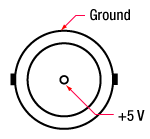
0~5 V
リモートインターロック入力
2.5 mmモノラルジャック
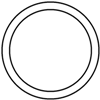
レーザの「ON」を有効にするためには、端子間を付属のプラグまたは外部スイッチのようなデバイスで短絡する必要があります。
コンピュータ接続
USB B型
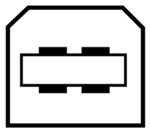
USB A型-B型ケーブルが付属
Laser Safety and Classification
Safe practices and proper usage of safety equipment should be taken into consideration when operating lasers. The eye is susceptible to injury, even from very low levels of laser light. Thorlabs offers a range of laser safety accessories that can be used to reduce the risk of accidents or injuries. Laser emission in the visible and near infrared spectral ranges has the greatest potential for retinal injury, as the cornea and lens are transparent to those wavelengths, and the lens can focus the laser energy onto the retina.
Safe Practices and Light Safety Accessories
- Laser safety eyewear must be worn whenever working with Class 3 or 4 lasers.
- Regardless of laser class, Thorlabs recommends the use of laser safety eyewear whenever working with laser beams with non-negligible powers, since metallic tools such as screwdrivers can accidentally redirect a beam.
- Laser goggles designed for specific wavelengths should be clearly available near laser setups to protect the wearer from unintentional laser reflections.
- Goggles are marked with the wavelength range over which protection is afforded and the minimum optical density within that range.
- Laser Safety Curtains and Laser Safety Fabric shield other parts of the lab from high energy lasers.
- Blackout Materials can prevent direct or reflected light from leaving the experimental setup area.
- Thorlabs' Enclosure Systems can be used to contain optical setups to isolate or minimize laser hazards.
- A fiber-pigtailed laser should always be turned off before connecting it to or disconnecting it from another fiber, especially when the laser is at power levels above 10 mW.
- All beams should be terminated at the edge of the table, and laboratory doors should be closed whenever a laser is in use.
- Do not place laser beams at eye level.
- Carry out experiments on an optical table such that all laser beams travel horizontally.
- Remove unnecessary reflective items such as reflective jewelry (e.g., rings, watches, etc.) while working near the beam path.
- Be aware that lenses and other optical devices may reflect a portion of the incident beam from the front or rear surface.
- Operate a laser at the minimum power necessary for any operation.
- If possible, reduce the output power of a laser during alignment procedures.
- Use beam shutters and filters to reduce the beam power.
- Post appropriate warning signs or labels near laser setups or rooms.
- Use a laser sign with a lightbox if operating Class 3R or 4 lasers (i.e., lasers requiring the use of a safety interlock).
- Do not use Laser Viewing Cards in place of a proper Beam Trap.
Laser Classification
Lasers are categorized into different classes according to their ability to cause eye and other damage. The International Electrotechnical Commission (IEC) is a global organization that prepares and publishes international standards for all electrical, electronic, and related technologies. The IEC document 60825-1 outlines the safety of laser products. A description of each class of laser is given below:
| Class | Description | Warning Label |
|---|---|---|
| 1 | This class of laser is safe under all conditions of normal use, including use with optical instruments for intrabeam viewing. Lasers in this class do not emit radiation at levels that may cause injury during normal operation, and therefore the maximum permissible exposure (MPE) cannot be exceeded. Class 1 lasers can also include enclosed, high-power lasers where exposure to the radiation is not possible without opening or shutting down the laser. |  |
| 1M | Class 1M lasers are safe except when used in conjunction with optical components such as telescopes and microscopes. Lasers belonging to this class emit large-diameter or divergent beams, and the MPE cannot normally be exceeded unless focusing or imaging optics are used to narrow the beam. However, if the beam is refocused, the hazard may be increased and the class may be changed accordingly. |  |
| 2 | Class 2 lasers, which are limited to 1 mW of visible continuous-wave radiation, are safe because the blink reflex will limit the exposure in the eye to 0.25 seconds. This category only applies to visible radiation (400 - 700 nm). |  |
| 2M | Because of the blink reflex, this class of laser is classified as safe as long as the beam is not viewed through optical instruments. This laser class also applies to larger-diameter or diverging laser beams. |  |
| 3R | Class 3R lasers produce visible and invisible light that is hazardous under direct and specular-reflection viewing conditions. Eye injuries may occur if you directly view the beam, especially when using optical instruments. Lasers in this class are considered safe as long as they are handled with restricted beam viewing. The MPE can be exceeded with this class of laser; however, this presents a low risk level to injury. Visible, continuous-wave lasers in this class are limited to 5 mW of output power. |  |
| 3B | Class 3B lasers are hazardous to the eye if exposed directly. Diffuse reflections are usually not harmful, but may be when using higher-power Class 3B lasers. Safe handling of devices in this class includes wearing protective eyewear where direct viewing of the laser beam may occur. Lasers of this class must be equipped with a key switch and a safety interlock; moreover, laser safety signs should be used, such that the laser cannot be used without the safety light turning on. Laser products with power output near the upper range of Class 3B may also cause skin burns. |  |
| 4 | This class of laser may cause damage to the skin, and also to the eye, even from the viewing of diffuse reflections. These hazards may also apply to indirect or non-specular reflections of the beam, even from apparently matte surfaces. Great care must be taken when handling these lasers. They also represent a fire risk, because they may ignite combustible material. Class 4 lasers must be equipped with a key switch and a safety interlock. |  |
| All class 2 lasers (and higher) must display, in addition to the corresponding sign above, this triangular warning sign. |  |
|
| Posted Comments: | |
user
(posted 2023-11-16 07:55:51.73) how well ist the polarization of the source aligned to the output fiber. Can you express this as Polarization Ratio? We need at least 40dB Polarization ratio ksosnowski
(posted 2023-11-20 11:30:44.0) Thanks for reaching out to Thorlabs. In this case the PER is limited by the SLD emitter rather than the fiber axis alignment. We typically expect PER close to 18dB however we consider 15dB as a safe estimate overall. Unfortunately, 40dB is beyond our current capabilities on these devices. Quan-Shan Liu
(posted 2023-09-12 11:24:13.783) Dear Thorlabs Team,
May I know whether this item needs a warm-up prior to measurements?
Thanks,
Quan-Shan Liu ksosnowski
(posted 2023-09-12 10:02:52.0) Hello Quan-Shan, thanks for reaching out to Thorlabs. When the SLD benchtop unit is turned on, the TEC is activated. Even if the SLD optical output is not activated yet, the TEC will be active. The S5FC temperature typically requires up to 2 minutes to stabilize. I've reached out directly to discuss this further. user
(posted 2022-11-15 20:59:49.143) Please tell me why 1320nm is displayed in the upper right corner of the 1310nm light source display? Isn't the output wavelength of this light source 1310nm? ksosnowski
(posted 2022-11-15 09:57:13.0) Hello, thanks for reaching out to Thorlabs. The central wavelength of the installed diode is programmed to the unit and displayed on the S5FC panel. The exact value can vary between units however the central wavelength specification for S5FC1018S is 1290nm (min) - 1330nm (max). Changing the operating current and temperature may also shift the central wavelength of the SLD. These are not intended to be tuned significantly using temperature or current. I have reached out directly to discuss this further. user
(posted 2021-07-26 18:05:09.943) Hi, could you please tell me the fiber core diameter for S5FC1021P? Thanks. YLohia
(posted 2021-07-26 11:18:41.0) Hello, the S5FC1021P contains the SLD1018P pigtailed SLD package, which has the SMF-28e+ fiber. This fiber is specified for an MFD of 9.2 ± 0.4 μm @ 1310 nm. ZHANG Luan
(posted 2021-04-21 02:44:41.23) Hi,
Could you please tell me whether there is an isolator inside S5FC1005S?
Thanks a lot! YLohia
(posted 2021-04-21 11:35:25.0) Hello, these benchtop sources do not contain integrated isolators. Custom units with integrated isolators can be requested by using the "Request Quote" button above. jlow
(posted 2013-01-22 17:09:00.0) Response from Jeremy at Thorlabs: Unfortunately we do not have a LabVIEW module for this. However, you should be able to make your own using the serial commands listed in the manual of the S5FC1018S (page 14 of the manual). kohsce
(posted 2013-01-11 03:54:23.343) I am using Labview to control a S5FC1018S, but the data readback is rather slow and in a series of strings.
do you have a labvew module to control this SLD? Adam
(posted 2010-04-26 23:23:53.0) A response from Adam at Thorlabs to c.j: The SLDs used in the Benchtop sources do not have internal isolators. We can offer this as a custom option. Whether or not an external isolator is required between the benchtop unit and experiment will depend on the sensitivity of the experiment to any changes in the spectral ripple due to feedback. Strong reflections back into the SLD will cause an increase in spectral ripple, however, if the return loss is less the -20 dB then there most likely isnt a need for an isolator. Again, this depends on the sensitivity of the experiment. I will contact you directly to get more information. c.j.lee
(posted 2010-04-26 15:32:21.0) How sensitive is the product to optical feedback? Is it optically isolated, or should we expect to place an isolator between it and the experiment? |
 Products Home
Products Home










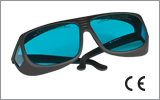
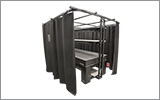
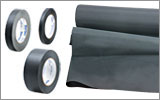
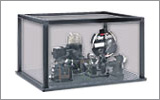
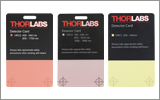
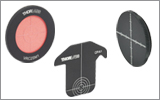
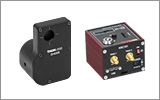
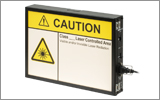
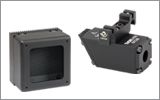

 ベンチトップ型SLD光源
ベンチトップ型SLD光源